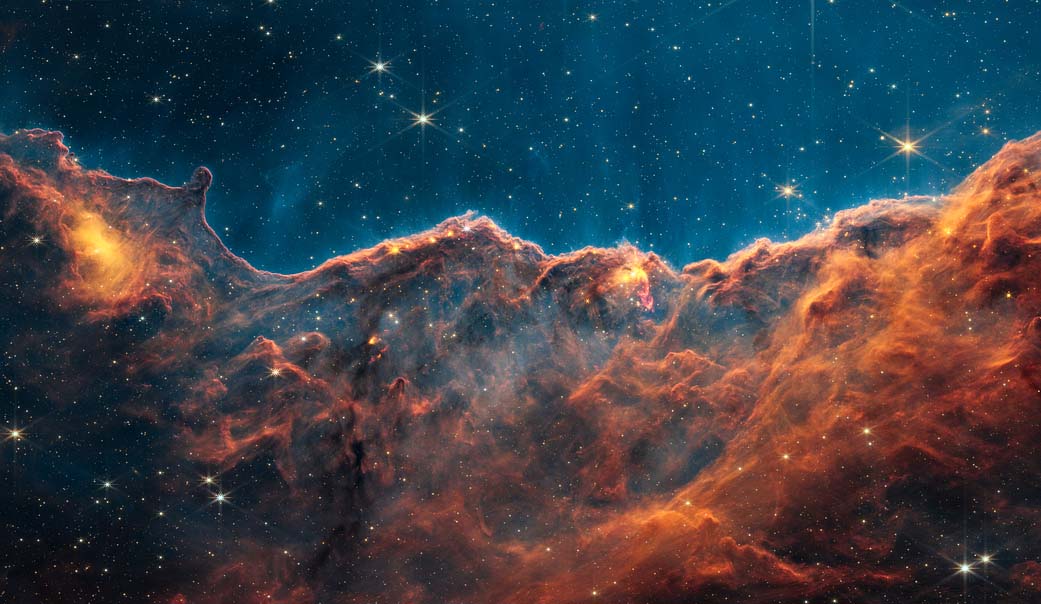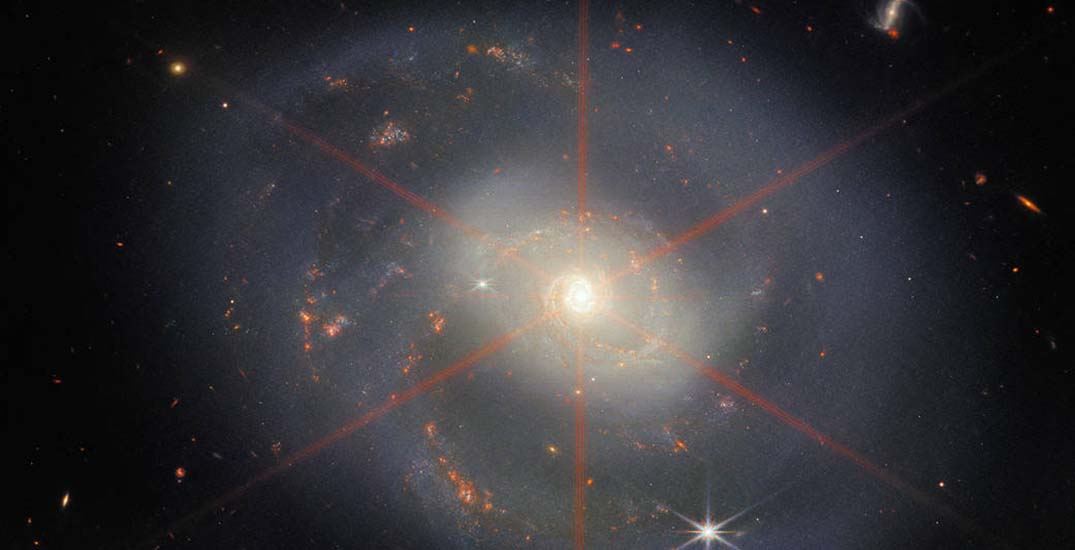The James Webb Space Telescope has spied a spiral galaxy – NGC 7469 is located 220-million light-years from Earth in the constellation Pegasus.
In this image (featured picture) released on 21 December 2022, the galaxy is seen to be very dusty, but Webb’s infrared vision can peer through to observe features like the intense ring of star formation close around its bright centre.
Earlier this week, NASA released a closer look at one of Webb’s first images, the iconic Cosmic Cliffs.
Scientists have found dozens of energetic jets and outflows from young stars previously hidden by dust clouds. The discovery marks the beginning of a new era of investigating how stars like our Sun form, and how the radiation from nearby massive stars might affect the development of planets.
The two dozen previously unknown outflows from extremely young stars were found by analyzing data from a specific wavelength of infrared light (4,7 microns).
Webb’s observations uncovered a gallery of objects ranging from small fountains to burbling behemoths that extend light-years from the forming stars.

Image credit: NASA, ESA, CSA, and STScI. Image processing: J. DePasquale (STScI).
Featured pic credit: ESA/Webb, NASA & CSA, L. Armus, A. S. Evans

